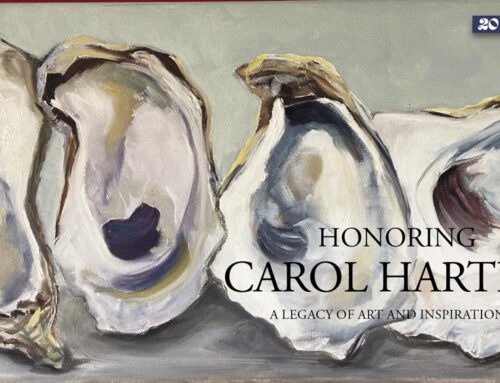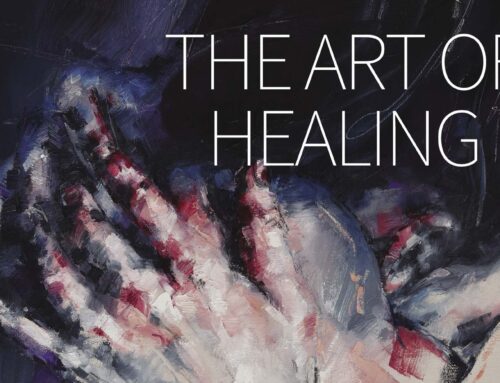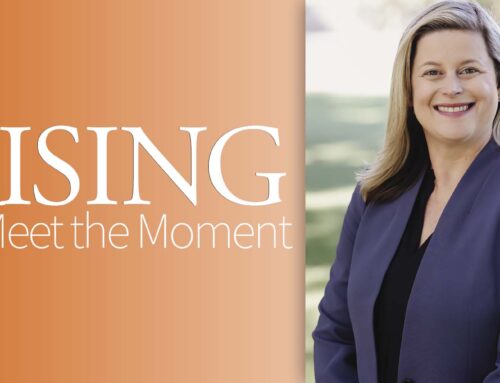
Anybody Can Collect Art. Everybody Should.
WORDS AND PHOTOS BY HEATHER L. YOUNG
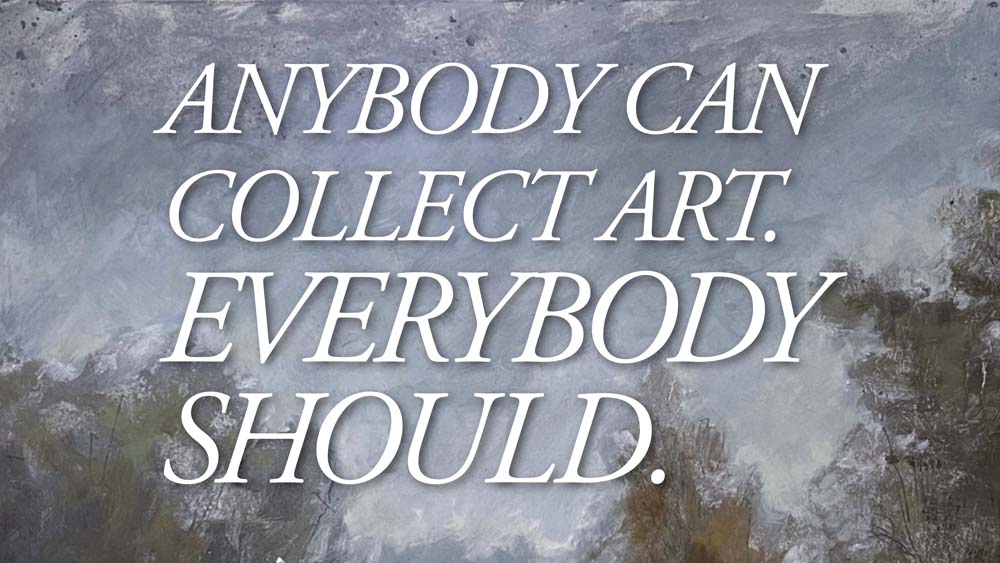
It wasn’t all that long ago that the words “Live, Laugh, Love” and other phrases of “word art” were plastered all over America’s walls, and now I’m seeing those words in the garage sale heap on Saturday morning. As an artist, I’ve often wondered why people pour money into designer handbags and luxury vehicles but buy disposable art.
Perhaps it’s the idea that original art is unattainable and therefore people never step foot inside a gallery. The reality is, most working artists today have a variety of price points to make their work accessible, and the work they are doing to document our local history in visual form must be supported. We keep hearing the word “sustainable” and yet in one year we have seen many businesses, galleries included, close their doors. So why invest in art?
I sat down with three local collectors to find out what inspires them
to keep buying.
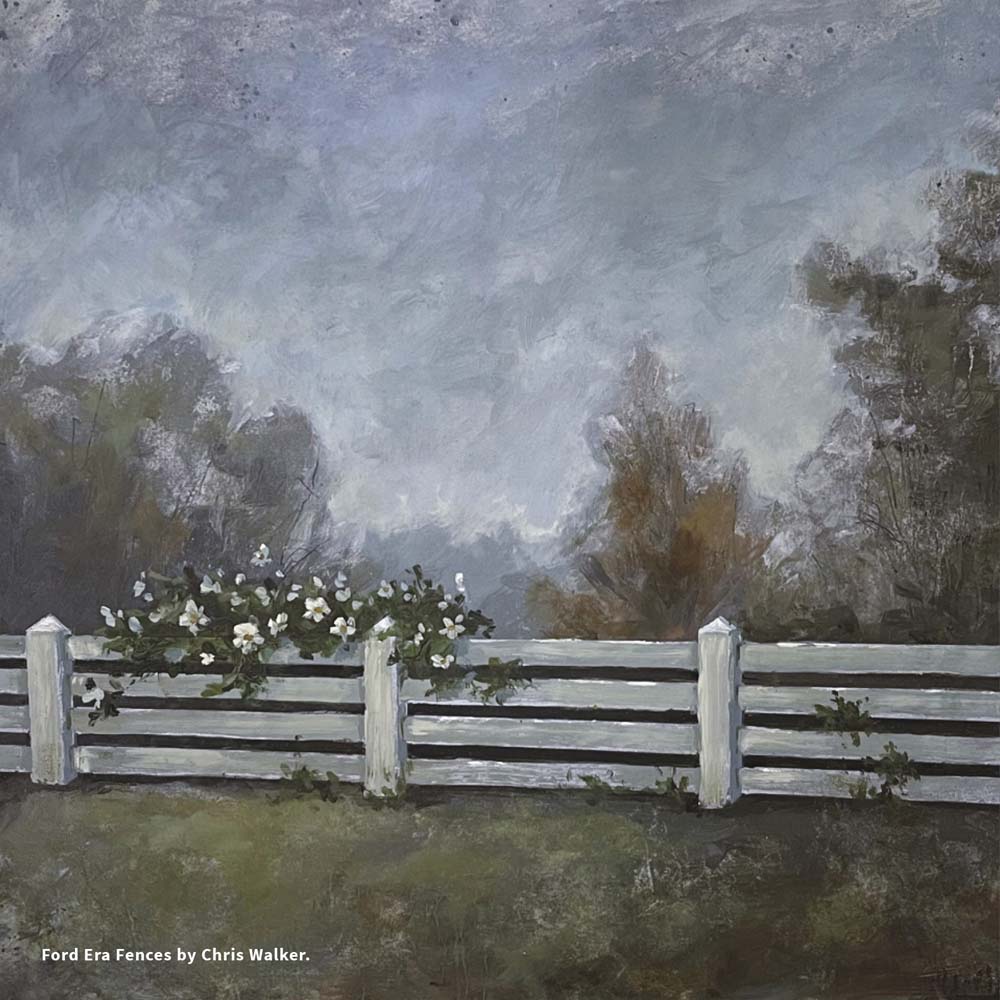
Michael Burdette walked into Leahy Art Gallery to get some of his father’s war memorabilia framed. He immediately recognized a landscape painting of Waldburg Creek and told artist, Jim Leahy, “I know exactly where that’s at!” The painting captured one of his favorite fishing holes, a place you would only recognize had you been there by boat. Michael bought the painting that day. He’s since commissioned Jim to paint several other pieces. “It’s cool to record places that I remember from my childhood. All these places are going away, the coastline is changing every day. I’d go take a picture and sit down and talk with Jim.” Michael’s collection reminds him of going to see the shrimp boats as a kid at the Bryan County Fisherman’s Coop, a place that no longer exists, or fishing spots he doesn’t get to see much anymore. “It’s all about memories… reflections that come back.” His collaborations with Jim have also inspired him to try his hand at painting. Michael doesn’t consider himself a collector. Perhaps because the idea of “the art collector” often carries a lofty connotation. None-the-less he is one, and his collection will preserve his story for generations to come.
For a different perspective, I met with a collector whose works include internationally-known names like Chihuly, LeRoy Nieman, and Picasso. Yes, there’s a privately owned Picasso, right here in the Hill. Though this collector wishes to remain anonymous, she graciously gave me a tour of her home and some insight into how she caught the art bug. She started collecting Asian-inspired art in college. “I never knew why I liked Oriental, but I was drawn to the clothes, art, and looks. Then I had my heritage DNA done, and I’m 80% Italian and 10% Asian and now I’m like, ok that’s where it comes from. It’s in my DNA.”

Intricately painted silk screens, paintings, furniture, and ceramics can be found in nearly every room of the house. She lights up as she begins to tell me about three pieces hanging in her guest bathroom. “I have no idea the value of any of these. The Columbus Art Museum had a garage sale so I bought a huge painting from them, which I’ve since sold. when I went to get it reframed, they cut the back open and these three things fell out and I thought ‘oh these are more valuable,’ and they were just hiding.” You can tell the thrill of the find and the story along with it fuel her love for collecting. I turn my gaze to a massive, floor to ceiling, late 19th century French poster in a thick bronze frame. She smiles again and tells me how she had been in in New York on September 11, 2001 to drop her daughter off at school. After the towers came down, she couldn’t leave her daughter alone in New York and decided to stay for a month. “I had never been to an auction, but I had nothing else to do. They didn’t have the actual things there, they had pictures of them. I didn’t read. I just saw that and thought, ‘how pretty.’ I had no idea of its size. A month later, I’m back in the Midwest and they called to ask how I wanted to get the piece home. I ended up paying more to ship it than I paid for the actual piece.”
Art is central in her design aesthetic, and while she admits that collecting was also “money in the bank,” it’s also much more than that. It’s their story. Oh and if you’re still wondering about that Picasso, well, it’s a first run, artist proof etching of Mother and Child that hangs appropriately over the antique crib her grandkids have used for years.

I wrapped up my interview by asking, how does art enrich your life? “Oh it’s so peaceful, to sit and look at the art. I mean the memories. There was an article where, like me, someone was telling them, ‘you have too much stuff. Get rid of it.’ So this lady got rid of it, and she said she sat home one night and thought, ‘I just got rid of all my memories.’”
Christy Sherman’s walls celebrate the history of the coastal south. She tells me about the first piece she ever purchased in Richmond Hill, May Day by artist Claudia Christiansen. The painting was inspired by a historical photograph of George Washington Carver School. “The teachers are on the porch playing the piano, and I was always drawn to that photo. When Ford came to town, there were 7 one-room schoolhouses for black children that he restored, but he wanted more for them. So he built a consolidated school, named it George Washington Carver and brought Mr. Carver down for the dedication, and this changed everything for these kids.” Christy explains further, “Ford brought in teachers that had masters degrees and provided new school books, programs, and lunches. I just love the colors and I love the stories.” The building is no longer standing, but the painting captures it in its prime. In her hallway hangs a painting of a Ford era white fence draped in Cherokee roses by local favorite, Chris Walker. A painting of a woman shucking oysters by Sarah Volker also speaks to the history of our area. Ford’s Oyster House was located near where Marker 107 is today.

Perhaps her most favorite piece is by highly collected folk artist, Zelle Manning. The King is Here depicts an old southern church and graveyard with the dead rising from their graves into a bright orange sky. “I got this by accident,” Christy explains. “My mom’s friend bought it in a gallery in Charleston, and she didn’t want it anymore, so she gave it to my mom. mom had it in a closet and I was like, ‘I need this!’” Her collection is highlighted with priceless pieces like her grandfather’s paint by number works and bowls he meticulously carved out of wood. She also has a wall of pieces her children completed under the instruction of local artist Carol Hartley.
All this to say, when you invest in art, you preserve memories, heritage, and promote sustainability, all while cultivating a style and story that is uniquely yours. Anybody can collect art, and everybody should.











